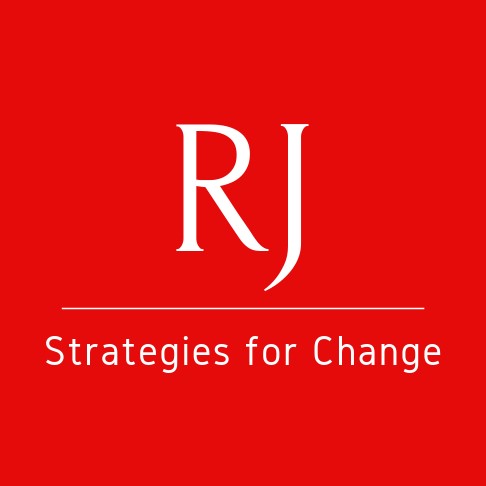Intern Kate Duffy’s first summary reviews Marie Keenan’s article Training for restorative justice work in cases of sexual violence (2018, International Journal of Restorative Justice, 1(2), 291-302). The article outlines the different models of restorative justice training most commonly used and highlights the need for specific, enhanced training for those working in the arena of sexual violence
Key message:
Sexual violence remains a pervasive problem in our society, and restorative justice should be available for those who might wish to participate. Before responding restoratively, however, practitioners must receive specialist training on both sexual violence and restorative justice to ensure that survivors fully benefit from the process.
Summary:
Interest in restorative approaches is increasing, particularly in relation to its role in desistance. Research indicates that many perpetrators and survivors of sexual violence would take part in restorative justice processes should they be made aware of it. However, specialist training is required for restorative justice practitioners who work in sexual violence cases to ensure that they are able to “identify and respond safely and competently to the risks of re-victimization, re-traumatisation and the subtlety of the power imbalances that can arise during the very restorative justice process itself” (p.292). This is true for victim-offender mediation and other models of practice, as well as for other serious offences beyond those of a sexual nature.
A brief overview of the common basic approaches to restorative justice training in Europe is provided. These reflect elements of the training practices that originate in Australia and New Zealand. Previous research found that there are three primary types of training and practice in European restorative justice, with most restorative practitioners now trained in either the Five Question Approach, the Balanced Model, or the Eclectic Approach.
The Five Questions Approach is based on five questions that have been carefully crafted and developed over time. They are intended to guide both the preparation and restorative justice meeting. Practitioners are trained to follow the questions closely. Sometimes referred to as the “scripted method”, this approach facilitates discussion and allows participants to express their feelings and work together to repair the harms caused by crime. Secondly, the Balanced Model Approach divides the restorative justice process into three stages: inclusion, participation, and transformation. Keeping to the belief that each stage needs a different set of skills from the facilitator, this approach teaches practitioners the skills they will need to facilitate a narrative dialogue across all three stages of the process. Distinguished by its commitment to equal concern for all stakeholders affected by the crime, it aims to balance the needs and interests of all parties. Finally, the Eclectic Approach includes the methods of facilitator training that are popular in many European countries and elsewhere. One example would be the training given to restorative justice practitioners in Belgium, which appears to be largely delivered in-house, and which permits expertise to develop through experience.
Keenan refers to her prior research findings that different professionals and laypersons, with knowledge on sexual violence ranging from novice to expert, facilitate restorative justice in cases of sexual violence across Europe. This work is often unregulated, but some jurisdictions are implementing measures to provide oversight and to ensure best practice. One example is in Belgium, where restorative justice and therapy sessions involving child sexual abuse include practitioners from a range of professional backgrounds, such as psychotherapy and psychology. However, these persons usually have limited restorative justice training. In contrast, mediators in Denmark receive restorative justice and sexual violence training for one week during their initial mediation coaching, which ranges from victim-offender mediation to police procedures, court procedures and victim support. Practitioners of restorative justice in sexual violence cases can be experts in their fields, but can still have a limited amount of training and understanding regarding anything outside of their remit.
There are three main reasons for specialist training for all practitioners facilitating restorative justice in sexual violence cases. Firstly, both survivors of sexual violence and offenders need to be assured that “restorative justice facilitators will be trained to the highest standards and will be well placed to respond to their safety, psychological and emotional needs.” (p.297). To meet this standard, Keenan advises that mediators should have both restorative justice training and training that provides a deep understanding of sexual trauma and its impact, the psychology of perpetrators, and sexual offending dynamics. This will help facilitators avoid replicating or missing the power dynamics connected with sexual offences, ensure that survivors’ voices are heard, and otherwise reduce the risk of inadequate practice.
The second recommendation regards the ‘triple role’ issue for restorative justice practitioners. Their challenge is to balance and navigate three sets of clashing ethical imperatives: community protection, justice and vindication for victims, and promoting the wellbeing and autonomy of offenders. Specialist training for restorative justice practitioners working in the area of sexual violence should be philosophically and ethically detailed so that students consider, reflectively and theoretically, such complex moral dilemmas.
Lastly, there is a need for public confidence and legitimacy in restorative justice. Restorative processes deal with the private interests of survivors and offenders, and the public interests of the law and communities. If either of these interests are not met, then public confidence and legitimacy for restorative justice cannot be guaranteed. Restorative justice is not conducted in a vacuum, independent from criminal justice in instances of sexual violence. In reality, many sexual violence cases are not dealt with in the courts, but can still be addressed by restorative justice services. Practitioners in these services need to develop clear ethical practices and be trained in these considerations. Overall, providing restorative justice services to survivors is important, and we must not be deterred or disheartened by the challenges ahead.
